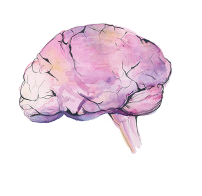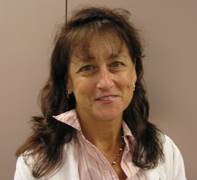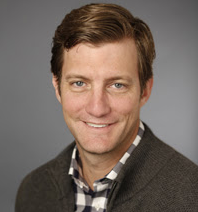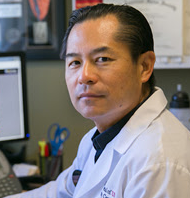Trying to prevent and better manage Alzheimer’s disease
When President Ronald Reagan designated November as National Alzheimer’s Disease Awareness Month 34 years ago, about 2  million Americans had the disease. Now, more than 5 million Americans suffer from it. The number may triple to about 14 million by 2050, according to the Centers for Disease Control and Prevention.
million Americans had the disease. Now, more than 5 million Americans suffer from it. The number may triple to about 14 million by 2050, according to the Centers for Disease Control and Prevention.
USC researchers are working with patients and their families to improve health across the life span. They are also creating algorithms and analyzing big data to try to prevent or slow down Alzheimer’s.
Contact: Zen Vuong (213) 300-1381 or zvuong@usc.edu
Loneliness is a risk factor for Alzheimer’s
“Social isolation is associated with increased risk of Alzheimer’s disease. While we can show that people who have weak social networks or feel lonelier have higher risk of screening for dementia, the physiological pathways through which isolation ‘gets under the skin’ to increase disease risk are not well understood. We are studying how social isolation cuts a path to Alzheimer’s disease via physiological dysregulation.”
Christopher Beam can discuss psychosocial risk factors of Alzheimer’s disease, sex differences in Alzheimer’s disease risk and caregiver bereavement. He will be an assistant psychology professor at the USC Dornsife College of Letters, Arts and Sciences in 2018. He is currently a postdoctoral fellow at USC.
Contact: beamc@usc.edu or (213) 740-0726
Helping people with Alzheimer’s and their families
“We are interested in learning more about how vascular risk factors, particularly high blood pressure and diabetes, affect both normal age-related changes of brain function and dementias. These studies provide an opportunity to be part of the solution to help find answers. Current research is focused on individuals over 60 years old who have mild memory problems as well as those with no memory problems.
“The current available drug treatments for Alzheimer’s disease and other neurodegenerative dementia are limited. The clinical drug trial program associated with the Alzheimer Disease Research Center (ADRC) at USC is an opportunity for patients with a study partner [usually a family member] to be part of cutting-edge research that I believe will help us to find effective disease-modifying medications.
“Dementias like Alzheimer’s disease are progressive conditions that can last eight to 10 years or more from diagnosis to death. The needs of patients and families change over the course of the illness. As a team, USC ADRC is able to assist patients and families provide ongoing care and support.”
Freddi Segal-Gidan can discuss how to improve medical care for older adults, especially those with memory problems. She works with a multidisciplinary team at the Alzheimer Disease Research Center at USC to provide comprehensive evaluations and ongoing management for patients.
Segal-Gidan is an associate professor of clinical neurology and family medicine at the Keck School of Medicine of USC and an instructional assistant professor of gerontology at the USC Leonard Davis School of Gerontology. She is also leader of the Outreach, Recruitment and Education Core of the ADRC.
Contact: segalgi@usc.edu or (562) 385-8130
The math behind the disease
 “We are developing statistical methods to better understand the long-term course of Alzheimer’s disease so that we can design better clinical trials and accelerate the discovery of effective therapies.
“We are developing statistical methods to better understand the long-term course of Alzheimer’s disease so that we can design better clinical trials and accelerate the discovery of effective therapies.
“Many different factors contribute to Alzheimer’s disease. Over 15 or more years, biological changes such as the accumulation of plaques and tangles as well as changes in brain structures and function occur. The effects of these changes are measured by caregivers and physicians through memory loss and impairment assessments.
“Changes in these measures of disease may take place over 15 years or longer, but researchers typically observe study volunteers for a much shorter duration. This makes it difficult to study and understand the long-term evolution and interrelation among the measures of disease. I develop algorithms that utilize data from shorter-term studies to develop a more comprehensive picture of the disease’s long-term progression.”
Michael Donohue is a biostatistician who can discuss the earliest phases of Alzheimer’s disease. He helps design and analyze Alzheimer’s disease clinical trials. Donohue is an associate professor of neurology and associate director of biostatistics at the Alzheimer’s Therapeutic Research Institute, the San Diego branch of the Keck School of Medicine of USC.
Contact: mdonohue@usc.edu or (858) 964-0790
Stopping Alzheimer’s before it starts
“We hope to be able to predict if someone is at higher risk of developing dementia and if they will likely develop Alzheimer’s disease earlier than expected. We combine and analyze terabytes of information from medical exams, memory testing, laboratory tests, imaging scans and genetic testing to determine if people are developing Alzheimer’s disease as they age.
“Having this knowledge will enable us to institute a preventive course before Alzheimer’s symptoms arise, giving us the best chance to slow down or even prevent memory loss. USC wants to ensure healthy aging.”
Meng Law is exploring using artificial intelligence to diagnose dementia. He can discuss how MRI and PET scans are providing bioinformatics that can be used to develop preventive therapies.
Law is director of the Neuroradiology ACGME Fellowship Program at the Keck School of Medicine of USC and director of the neuroimaging core for the Alzheimer Disease Research Center at USC. He is also the medical director for the USC Mark and Mary Neuroimaging and Informatics Institute.
Contact: meng.law@usc.edu or 323-442-7246
ALZHEIMER’S AND AGING
As a research institution devoted to promoting health across the life span, USC has more than 70 researchers dedicated to the prevention, treatment and potential cure of Alzheimer’s disease. The memory-erasing illness is one of the greatest health challenges of the century, affecting 1 in 3 seniors and costing $236 billion a year in health care services. USC researchers across a range of disciplines are examining the health, societal and political effects and implications of the disease.
In the past decade, the National Institute on Aging has nearly doubled its investment in USC research. The investments include the Alzheimer Disease Research Center.
